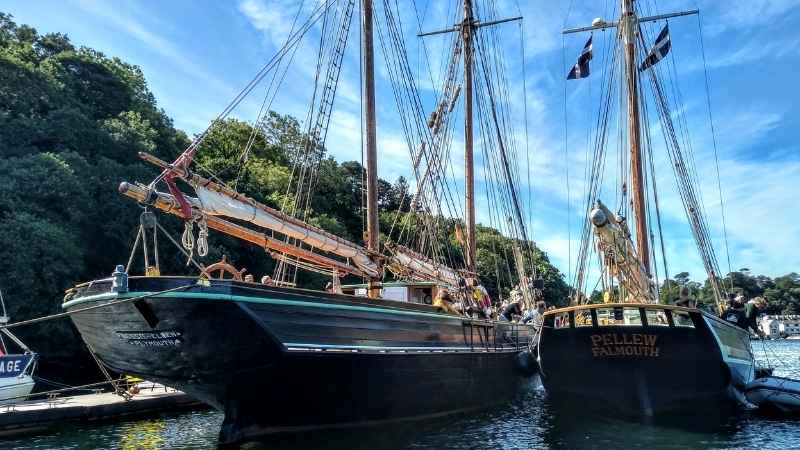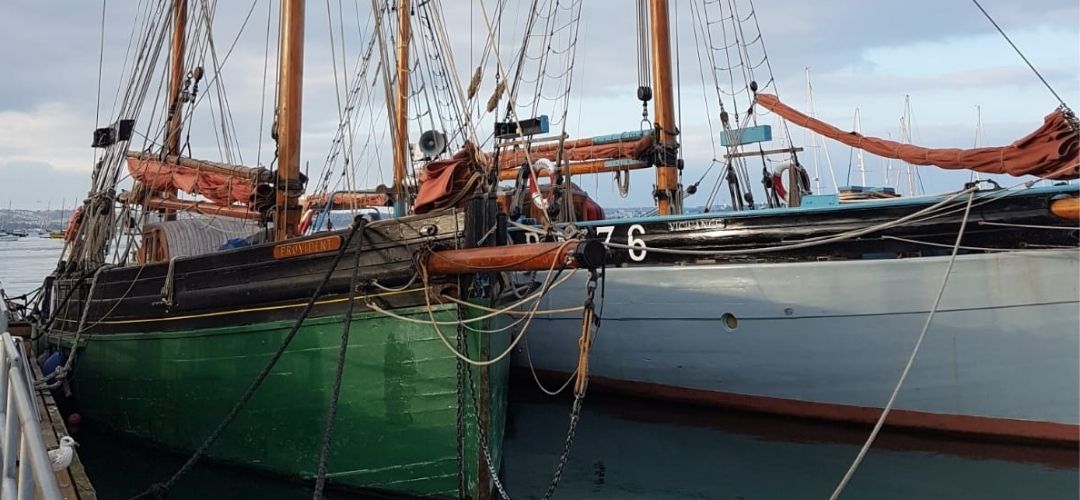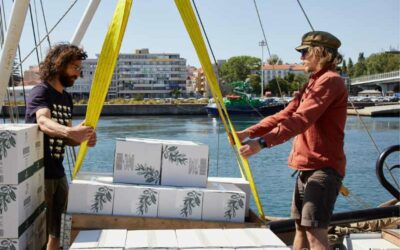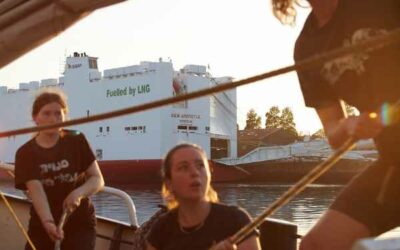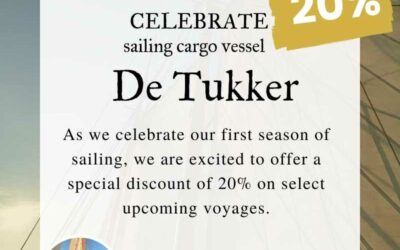Carvel boatbuilding is a method of constructing wooden boats and tall ships by fixing planks to a frame, edge to edge and forming a smooth hull. Carvel-built construction enables great length and breadth of a ship, as well as supporting superior sail rigs because of its strong framing.

History and development of the Carvel boatbuilding method
Sources suggest that the carvel method developed through the later Middle Ages (around 14th – 15th century AD) in the Mediterranean region. The carvel method is generally credited to the Portuguese who were the first in the period to explore the Atlantic islands. They sailed south along the coast of Africa, searching for a trade route to the far East to avoid the costly taxes of Eastern Mediterranean civilizations who dominated these waters at the time.
By the end of the Middle Ages, carvel became the dominant construction method for building large ships.
Carvel construction was robust and could incorporate timber of lesser quality than clinker built boats. It was not only better suited to the building of large ships but also more suitable for how ships were used at the time, such as long ocean voyages.
The first large carvel-built ships were carracks and caravels in the 14th to 15th century AD. Both types of ships were developed in the Iberian peninsula, from where they were first used by the kingdoms of Portugal and Spain in the early trans-oceanic voyages.
Some particulars
Boatbuilding techniques, like carvel, have been passed down for generations. To learn more about the carvel method I spoke with a boatbuilder: Alen.
Alen has experience with the carvel method. Two years ago he helped refit a wooden Bermudian Ketch and he has worked as ship curator for the maritime museum of Sergeja Masera in Piran, Slovenia. The wooden ketch was constructed using the carvel technique and at the museum he worked on a variety of ships, most of which were carvel constructed too.
One thing I was interested in was how the ships remain watertight. This is done using a method known as caulking. “Caulking is a process of sealing the space between two planks to make the boat watertight. There are a few different methods to achieve this. In the North, they used wool and tar and in the Mediterranean they used flax or hemp fibre soaked in oil or grease. A thick rope is rammed between two planks with a special tool to fill the void and make the boat watertight.”
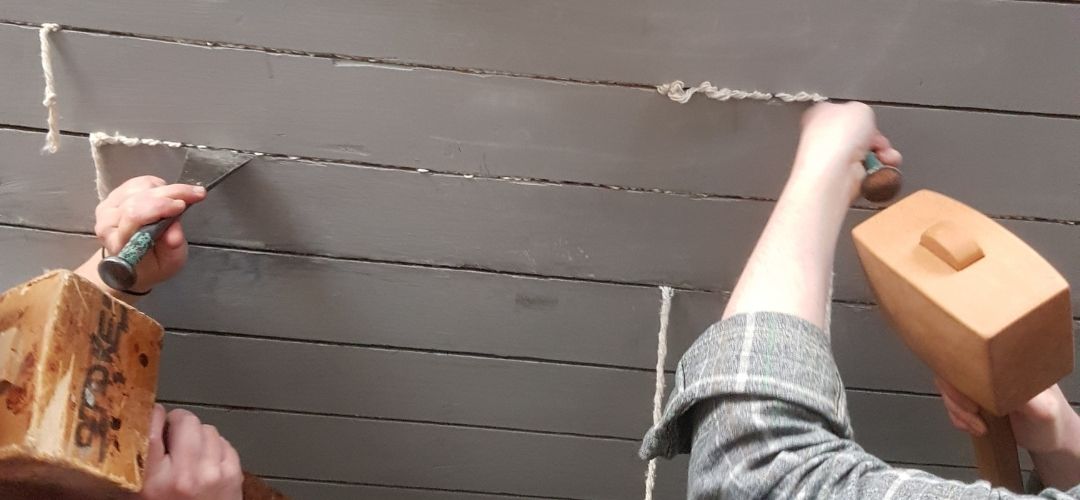
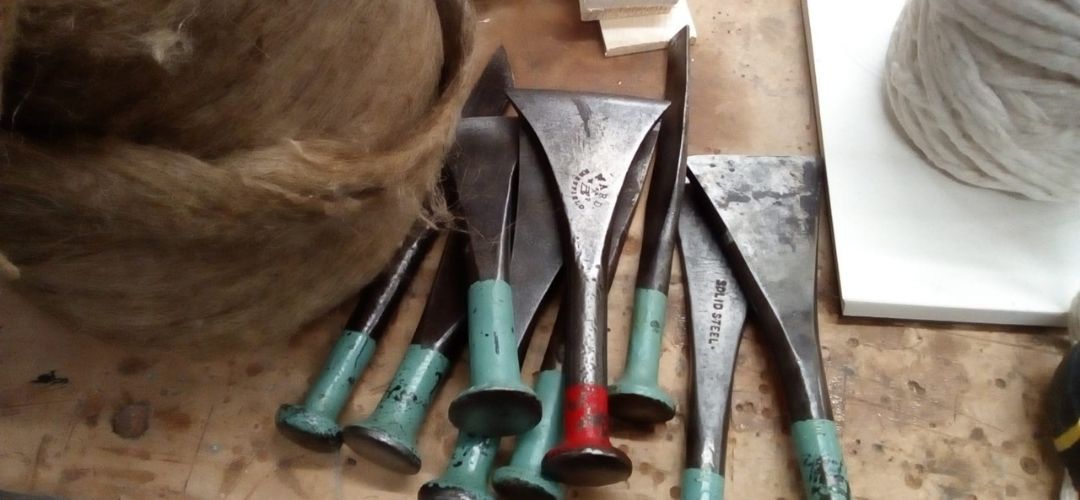
Carvel in sail cargo
So what about the carvel method in sail cargo?
Sailing ships transporting cargo across the oceans and along coastlines needs to be built with strong materials and construction. Quite a few Tall Ships today are made from steel and plastic, yet some sail cargo companies are choosing to build/restore their vessels in wood using the carvel method. These companies are working towards a sustainable future and making changes for maritime transport. Here are some examples:
- Hawila – A cooperative that is restoring a wooden, carvel-built sail cargo ship in Denmark. At the moment they are rebuilding the Baltic Trader Hawila. Two-thirds of the ship are now fully refurbished from keel to deck with 80% of new planking, new keel, and side keelsons.
- Raybel Charters – A maritime heritage social enterprise based near London, UK.. They are restoring a 100 year old wooden Thames Sailing Barge, Raybel. They have strengthened the bow, starting with the hull planking where they scraped off layers of paint to reveal the existing fixings. Their volunteers are continuing to work on the deck planking.
- Sail Cargo Inc – This company is building a wooden cargo schooner, Ceiba, which is designed to carry up to 250 tons of goods. Their shipyard is located in Costa Rica which has strict forestry laws. As their ship is being built from wood, they are ensuring that all lumber is sustainably harvested. Next to their sustainable timber sourcing practices, Sail Cargo Inc has an ongoing reforestation program.
- A few sail cargo companies are already operating using carvel constructed boats for transporting cargo. The use of sustainably sourced wood allows these companies to continue the rich heritage of shipbuilding and preserving knowledge for future generations. A prime example of this is Fairtransport, which operates one of the most famous sail cargo ships in the 21st Century, Tres Hombres. Tres Hombres transports rum, chocolate and coffee across the Atlantic, and has done so for over ten years.
There are also reasons why other companies don’t use the carvel method for their ships. Today we have a wide selection of different materials from which ships can be built. With increasing focus on the planet and sustainable practices, preserving the environment and nature is paramount. It could be argued that without a proper process of reforestation, recycling or restoration, building large wooden ships is detrimental to the environment. Another reason is that wood is one of the most expensive materials and working with it takes special care, skills and time. A lot of heritage practices are unfortunately being forgotten and society is demanding products in a shorter time, for less money – other materials offer a solution.
There are pros and cons, therefore, of constructing vessels with wood today. If the wood is there and can be bought/grown/harvested sustainably, then it’s a great opportunity of continuing these historic skills of boatbuilding, such as carvel. However, EcoClipper has chosen not to use the carvel method for their ships but will be constructing their purpose-built fleet in steel.
Nevertheless, the sail cargo industry has a variety of choices on which materials to use to build their ships, meaning that the carvel method is still used in ship construction today.
